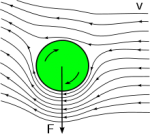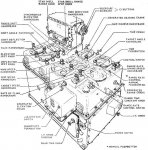@
Xcount
I suppose it depends, I don't reload myself and shoot factory or semi custom ammo only. In a 308, other than cost saving I see very little need to reload. (that changes if you want to shoot something like the 185 Juggernaut) But for a 175gr load, I shoot factory.
I use what pretty much everyone else does when it comes to other loads as well, like my 6mm Creedmoor load, it's George's load.
The consistency can certainly help, it won't hurt, anytime you can get single digit SDs. But the endless load development people do, I don't believe in. I think it is an excuse to not shoot in public or competitively.
Even ELR wise, I use what is off the shelf, and with factory Hornady 285s, when measuring managed to hold 6" of vertical at 1500m on paper. My groups were every bit the same as the guys there who rolled there own.
But again, if you have a solid, consistent load, that's definitely is better than not. I honestly never had a factory 308 load that wasn't under 1/2 MOA with my rifles, all of them, and have a few that with factory ASYM ammo have been below 3/8s of an inch.
@
damoncali
it's very easy to separate the guys who are regurgitating information and quoting stuff as fact vs guys who have shot this stuff and know the difference. If I am talking to David Tubb and he is telling me about it, I believe he is seeing true effects, verses the guy with the stock 5R claiming to need 1/2 MOA of SD at 600 yards. It's really quite simple, and why you see push back.
And because of what I said above, about the Human Factor, I find it odd that people who have so much trouble with their IPhone app getting it to match their system, then want to turn everything on and needs the SD values being presented as fact. The SD used in these ballistics Apps are a basic flat rate number with no real calculation or necessary information. It's the guy who has CE turned on but no Latitude information or compass bearing to target in the computer... you just know. What they are seeing is not "it" In this case Gerald Perry had it right in ExBal, he called it Shooter Drift and required you actually shot and measured the deviation. I personally don' t buy any of the SD stuff, as I have yet to see it as true information. (the USMC ignores it, always has, not in a single manual) If it was so cut and dry we would be missing our target by NOT using it, we do not. In my opinion, it's a sub sonic effective and not nearly as much at super sonic speeds as being reported. When people quote off iron sights from the 1900s, the bullets were going sub sonic most of the way. Huge arc.
Same with CE, i believe everyone is wrong, because nobody takes into consideration the Earth drags it atmosphere with it, so the speed of the earth spinning is not the same because at the surface the air boundary layer travels with us. So if you figure the speed of the Earth's rotation, it won't work. Show me the offset by this boundary layer moving ? The last time I read the news, the guys floating above Earth in balloon enhanced lawn chairs are going with the wind, and not winding up in the Pacific Ocean. Same thing with the little kids launching GoPros on weather balloons and retrieving them, if the number were as big as we try to say, all those would be in the Pacific Ocean. If you feel a 2 second TOF is moving the target away from you, how come every chimney in the world does not leave a streak of smoke 10ft above the ground.
It's buzz words, like when you meet a guy and he goes on about Humidity, or he is Black Ops guy, same thing. They go on and on about humidity and how they account for it, then repeat it backwards. They believe because we feel heavier the bullet is being negatively effected by high humidity. So they say, high humidity increases drag. At that point you roll your eyes and walk away.
Pretty simple to separate the shooter from the reader. Mention, SD, CE, Humidity... and I am off to hit on your wife. I would rather the conversation turn to her nails or shoes.




